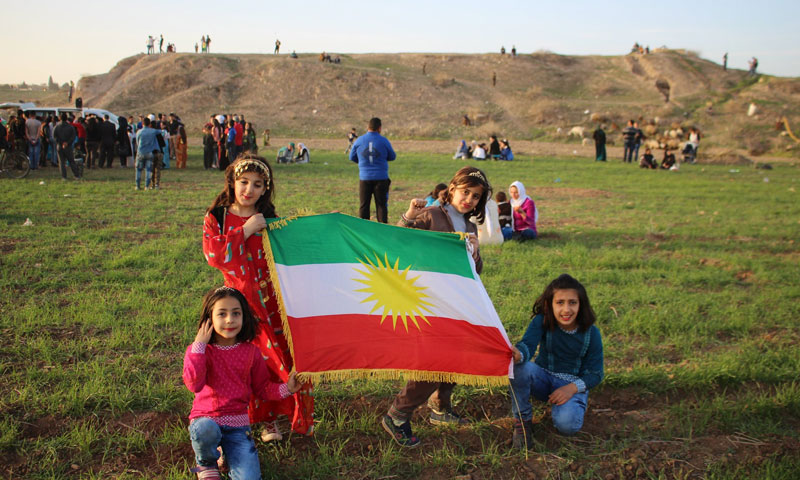



In the shadow of the current political and military interactions under which the Kurdish file is enduring in Syria, Nowruz celebrations went cold and weary this year.
Nowruz, which Kurds celebrate every year on March 21, lies at the very soul of the area’s heritage and history, as well as the Kurdish identity.
Nowruz corresponds to the first day of the Kurdish year, which Kurds, Persians and Yazidis around the world celebrate as a national occasion.
The Asian nations’ celebration of spring relates to fertility and rejuvenation. The Kurds, however, link the celebration to a different dimension, a nationalist one, especially their ability to break from tyranny, which the legend of “Kawa the Blacksmith” stands as an icon for.
“Shahnameh” a poem by Ferdowsi mentioned Kawa as a rebel, who stood in the face of King “Azdahak,” who carried snakes upon his shoulders and fed them the brains of the villages’ children.
After he sacrificed 16 of his children, Kawa was left with his last and little daughter, so he decided to break the curse that befell his village, as the legend says.
The Blacksmith offered the king a lamb’s brain instead of his daughter; the village’s people mimicked him, until he formed an army of children and decided to release the village’s people from the king’s tyranny.
He lit a fire on the mountain’s slope announcing a revolution from 20 to 21 of March, killing the king and liberating his own people from subjection for once and all.
Kurds light a fire on the same evening every year, as to commemorate Kawa, the icon, and believing that the fire shall keep burning, because it is the fire of redemption, liberation from slavery, and the spark of the revolution for the help of the impoverished people.
The people of Qamishli conjured Kawa’s memory, lit fire in the towns, cities and villages, as well as on tops of the mountains. At night, they danced on the melodies of the famous Kurdish singer Şivan Perwer and other artists who sang for Nowruz and the Kurdish nationality.
In the morning, the families celebrate through wearing the traditional Kurdish outfit and go to a specific location, where folkloric bands gather to sing and dance the Kurdish “Dabke”. The people also observe a minute of silence before they start celebrating and camp to the nightfall, singing the Kurdish anthem all the time.
“Since 2013, we have not celebrated Nowruz the same way we used to do before due to the massacres that are happening,” Ahmad al-Ali, from the city of Qamishli, told Enab Baladi.
“There is a fear of gatherings, especially after the massacre that happened in al-Hasakeh on Nowruz night when a suicide bomber from the “Islamic State” (ISIS) bombarded himself among the people, killing many.”
“ISIS” also adopted a double attack at the night of Nowruz in the city of al-Hasakeh, the death toll of which ended up as 45 people, including five children.
Ali added that “after this, celebration was limited to picnics in nature and lighting some candles up.”
“This year, despite all that Afrin has witnessed and the downing of Kawa the Blacksmith’s statue, some people insisted on celebrating, for Kawa is a symbol that have been there for thousands of years and it cannot be destroyed in a minute,” according to Bahzad Issa, from the city of Qamishli.
“Nowruz stands for struggle, and these losses are only temporary, which our children should not get used to. They should learn that Afrin belongs to the people who have been displaced from their homes,” he added.
The war related state of the country, that have been going on for eight years now, have affected the shape of Nowruz festivities, especially with displacement, exile and death. However, this situation did not hinder people from celebrating this occasion even if they followed a different approach. Through their insistence to relive the memory, they defended the iconic nature of liberation.
if you think the article contain wrong information or you have additional details Send Correction